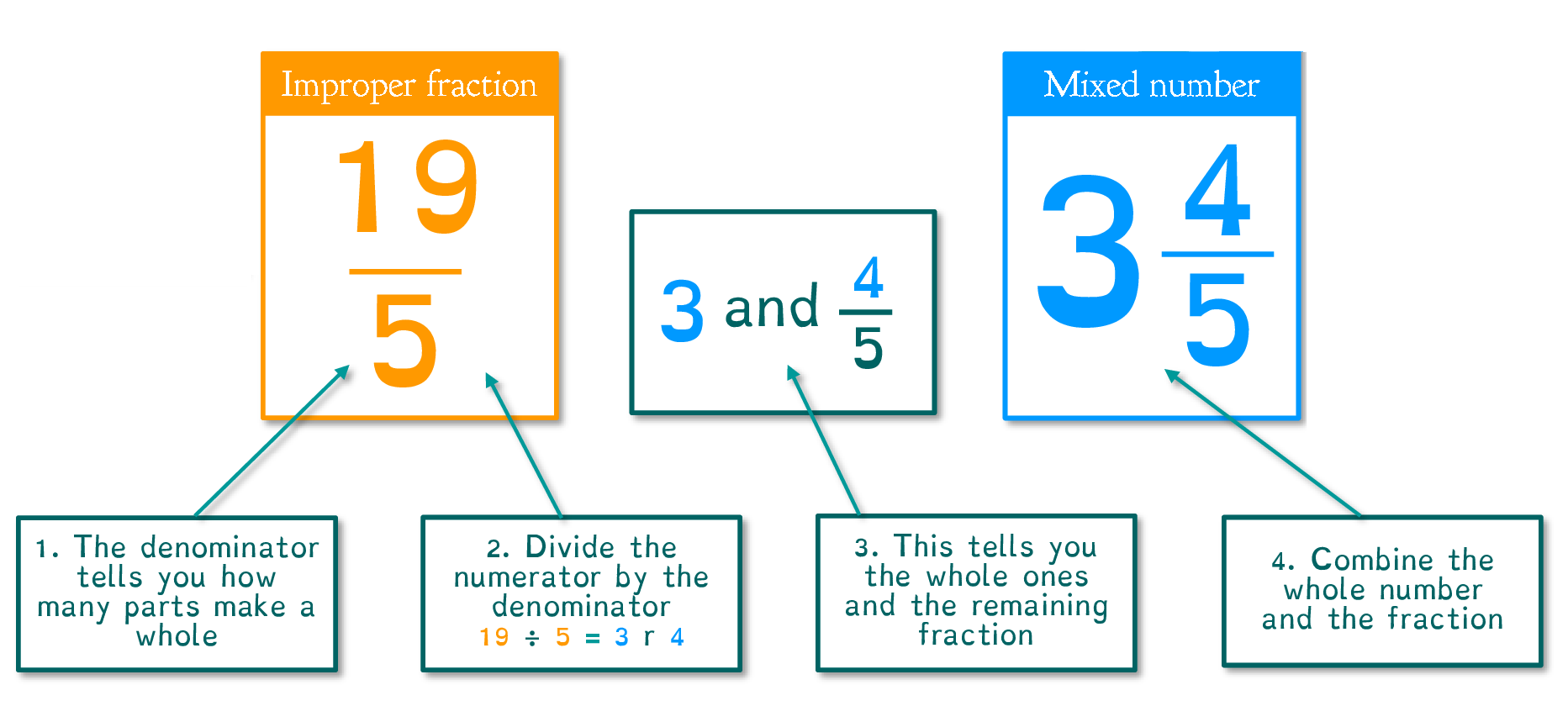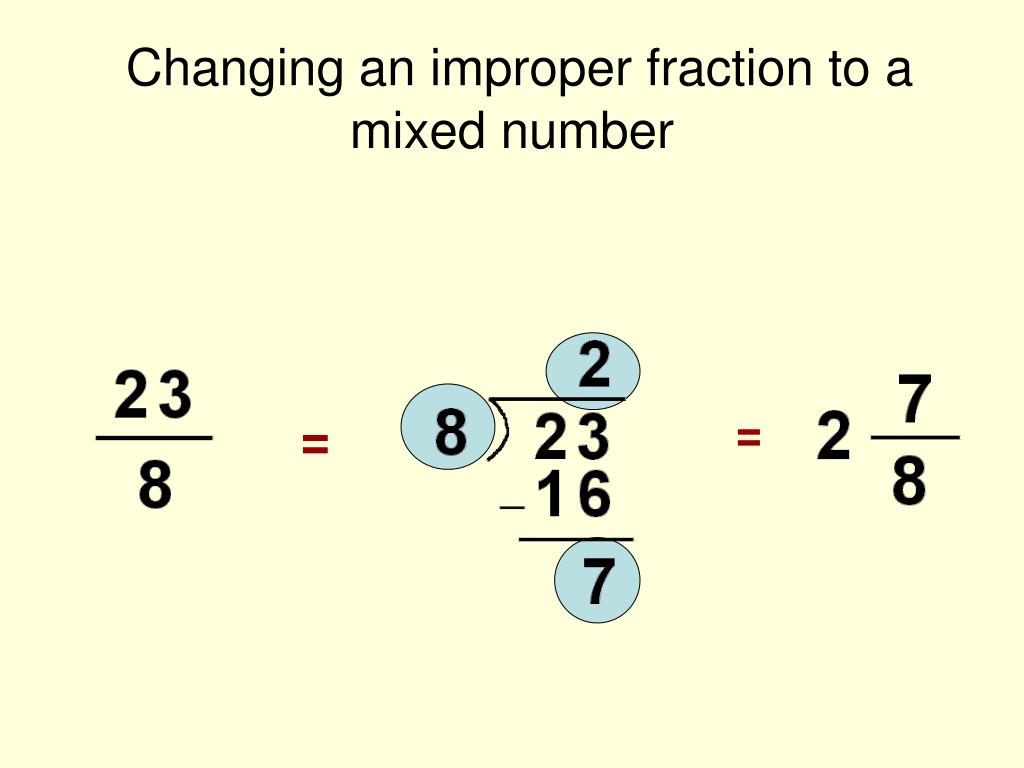Converting improper fractions to mixed numbers can feel like unraveling a puzzle at first, but it's simpler than it seems. This mathematical process is an essential skill for anyone dealing with numbers, whether you're a student, teacher, or someone who just loves math. By understanding how improper fractions work and learning the steps to turn them into mixed numbers, you unlock a practical way to express quantities more clearly. For instance, instead of saying "five halves," you can say "two and a half." It’s not just about numbers; it’s about making sense of them in everyday life.
Let’s start by talking about what improper fractions are. These are fractions where the top number (numerator) is larger than or equal to the bottom number (denominator). When you come across such fractions, converting them to mixed numbers can make them easier to understand. Whether you're dividing pizza slices or measuring ingredients for a recipe, knowing how to handle improper fractions is incredibly useful.
In this guide, we'll explore the ins and outs of converting improper fractions to mixed numbers. You'll learn step by step how to approach this process and discover tips that make it even simpler. By the time you finish reading, you'll feel confident enough to tackle these conversions on your own, even if you're just starting out. So, let’s get going!
Table of Contents
- How to convert improper fractions to mixed numbers
- Why is it important to know how to convert improper fractions to mixed numbers?
- What are improper fractions and mixed numbers?
- How to convert improper fractions to mixed numbers - Step by Step
- How can I check my work when converting improper fractions?
- Tips and Tricks for Converting Improper Fractions
- What are some real-life examples of improper fractions?
- Summary of how to convert improper fractions to mixed numbers
How to convert improper fractions to mixed numbers
Alright, so let’s break this down. First, an improper fraction is just a fraction where the top number (numerator) is bigger than or equal to the bottom number (denominator). It’s not scary, really. For example, 7/4 is an improper fraction. Now, converting this into a mixed number means splitting it into a whole number and a proper fraction. In this case, it would become 1 and 3/4.
So, how exactly do you do it? The process is fairly straightforward. You divide the numerator by the denominator. The result you get is your whole number part. Whatever is left over from the division becomes the numerator of the new fraction, and you keep the same denominator. For instance, if you have 11/5, dividing 11 by 5 gives you 2 with a remainder of 1. So, the improper fraction turns into 2 and 1/5.
Why is it important to know how to convert improper fractions to mixed numbers?
Knowing how to convert improper fractions to mixed numbers can really come in handy. Sometimes, improper fractions can be a bit confusing to look at. They don’t always give you a clear sense of how much you’re dealing with. Converting them into mixed numbers makes the numbers easier to visualize and work with. Like, instead of thinking about 17/4, you can think about 4 and 1/4, which is much simpler to grasp, right?
Plus, it’s useful in everyday situations. Imagine you’re baking and the recipe calls for 3/2 cups of sugar. You might find it easier to think of it as 1 and 1/2 cups, so you know exactly how much to measure out. In a way, converting improper fractions helps bridge the gap between abstract numbers and real-world applications.
What are improper fractions and mixed numbers?
Improper fractions are those where the top number is bigger than or equal to the bottom number. Mixed numbers, on the other hand, are a combination of a whole number and a proper fraction. Think of it like this: an improper fraction is like having a pile of pizza slices that add up to more than one whole pizza. A mixed number is when you count how many whole pizzas you have and then note how many slices are left over.
For example, if you have 8 slices and each pizza has 6 slices, you’ve got one whole pizza and 2 slices left over. That’s how you get the mixed number 1 and 2/6, which you can simplify further if you want. So, improper fractions and mixed numbers are just two different ways of expressing the same quantity, depending on what’s more convenient for the situation.
How to convert improper fractions to mixed numbers - Step by Step
Let’s walk through the steps together, shall we? First, take the improper fraction you want to convert. Let’s use 23/11 as an example. Now, divide the numerator (23) by the denominator (11). When you do this, you get 2 as the whole number part, because 11 goes into 23 two times.
Next, figure out the remainder. In this case, 23 minus (11 times 2) equals 1. That remainder becomes the new numerator of the fraction part. The denominator stays the same, so the improper fraction 23/11 becomes 2 and 1/11. Simple, right?
- Step 1: Divide the numerator by the denominator
- Step 2: Write down the whole number part of the result
- Step 3: Use the remainder as the new numerator
- Step 4: Keep the denominator unchanged
How can I check my work when converting improper fractions?
Checking your work is always a good idea. To do that, you can convert the mixed number back into an improper fraction and see if you end up with the original number. Let’s say you converted 2 and 1/11 into an improper fraction. Multiply the whole number (2) by the denominator (11), then add the numerator (1). This gives you 23, which matches the original numerator. That means you did everything correctly!
Another way to check is to think about whether the mixed number makes sense. If you have 5 and 3/4, for example, you know the fraction part is less than 1, so the whole number part should dominate. If it doesn’t seem right, go back and double-check your division or calculations.
Tips and Tricks for Converting Improper Fractions
Here are a few tips to make the process smoother. First, practice dividing numbers mentally or on paper. The more comfortable you are with basic division, the easier this whole thing becomes. Also, don’t rush. Take your time to ensure you don’t miss any steps.
Another trick is to visualize the fractions. If you’re converting 15/4, picture it as 4 groups of 4 with 3 left over. That makes it easier to see that the result is 3 and 3/4. Visualization can be a powerful tool for understanding math concepts, so don’t hesitate to use it.
What are some real-life examples of improper fractions?
Improper fractions show up in all sorts of places. For example, when you’re splitting a bill among friends and the total comes out to $27 divided by 4 people, you’re dealing with an improper fraction. The same goes for cooking, where recipes often involve fractions of cups or teaspoons. Knowing how to convert them can make these situations less confusing.
Construction and carpentry also use fractions all the time. If you’re cutting a piece of wood that needs to be 7/3 feet long, converting it to 2 and 1/3 feet might help you visualize the length better. It’s all about making numbers work for you, not the other way around.
Summary of how to convert improper fractions to mixed numbers
Converting improper fractions to mixed numbers doesn’t have to be tricky. Just divide the numerator by the denominator, write down the whole number part, and use the remainder as the new numerator while keeping the denominator the same. Practice makes perfect, so keep trying until it feels natural. With a little bit of practice, you’ll be able to convert improper fractions like a pro in no time.



Detail Author:
- Name : Kristy Pfannerstill
- Username : oberbrunner.granville
- Email : harvey37@yahoo.com
- Birthdate : 2002-04-07
- Address : 89538 Feest Parkways Kavonfort, WA 33900-2558
- Phone : 708.662.2849
- Company : Reichert LLC
- Job : Musician OR Singer
- Bio : Non hic voluptate sunt non. Corporis voluptatem distinctio quos sit id et culpa. Quaerat esse deserunt error necessitatibus voluptatem autem. Voluptate itaque non totam qui magnam sunt.
Socials
linkedin:
- url : https://linkedin.com/in/modestostanton
- username : modestostanton
- bio : Veniam odit ab non est ut.
- followers : 4525
- following : 2942
facebook:
- url : https://facebook.com/modesto_real
- username : modesto_real
- bio : Qui omnis vero exercitationem. Doloremque ducimus non consectetur qui.
- followers : 4074
- following : 845
tiktok:
- url : https://tiktok.com/@mstanton
- username : mstanton
- bio : Cum exercitationem iure iure eveniet harum sed.
- followers : 6889
- following : 1896